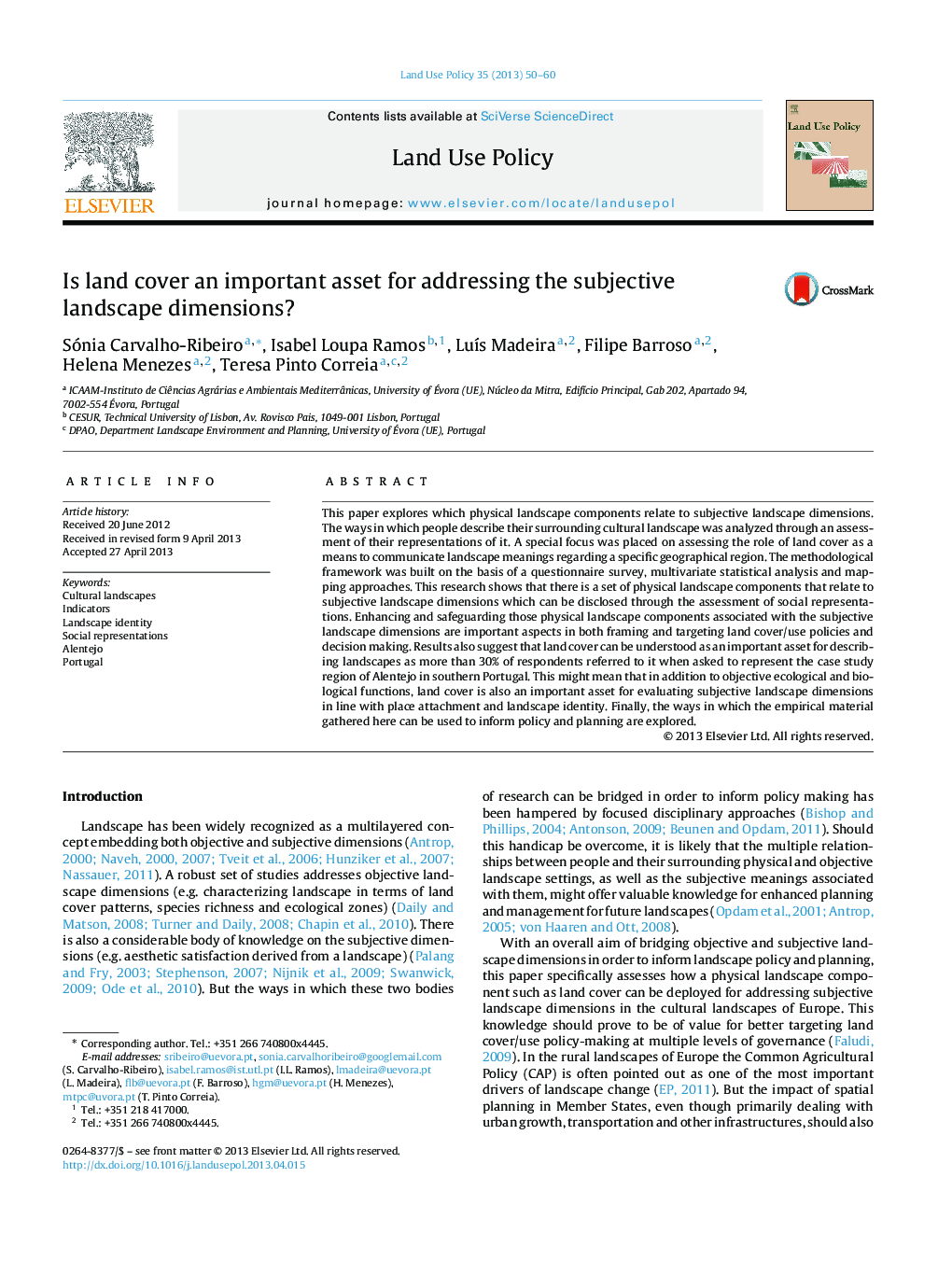| کد مقاله | کد نشریه | سال انتشار | مقاله انگلیسی | نسخه تمام متن |
|---|---|---|---|---|
| 93164 | 160116 | 2013 | 11 صفحه PDF | دانلود رایگان |
• This paper explored which physical landscape components relate to the subjective landscape dimensions.
• The role of land cover as a mean to communicate about cultural landscapes was assessed.
• Results suggest that land cover is an important asset as more than 30% of the respondents referred to it.
• Landscape dimensions such as place attachment and identity are important in framing land use policy.
This paper explores which physical landscape components relate to subjective landscape dimensions. The ways in which people describe their surrounding cultural landscape was analyzed through an assessment of their representations of it. A special focus was placed on assessing the role of land cover as a means to communicate landscape meanings regarding a specific geographical region. The methodological framework was built on the basis of a questionnaire survey, multivariate statistical analysis and mapping approaches. This research shows that there is a set of physical landscape components that relate to subjective landscape dimensions which can be disclosed through the assessment of social representations. Enhancing and safeguarding those physical landscape components associated with the subjective landscape dimensions are important aspects in both framing and targeting land cover/use policies and decision making. Results also suggest that land cover can be understood as an important asset for describing landscapes as more than 30% of respondents referred to it when asked to represent the case study region of Alentejo in southern Portugal. This might mean that in addition to objective ecological and biological functions, land cover is also an important asset for evaluating subjective landscape dimensions in line with place attachment and landscape identity. Finally, the ways in which the empirical material gathered here can be used to inform policy and planning are explored.
Journal: Land Use Policy - Volume 35, November 2013, Pages 50–60
